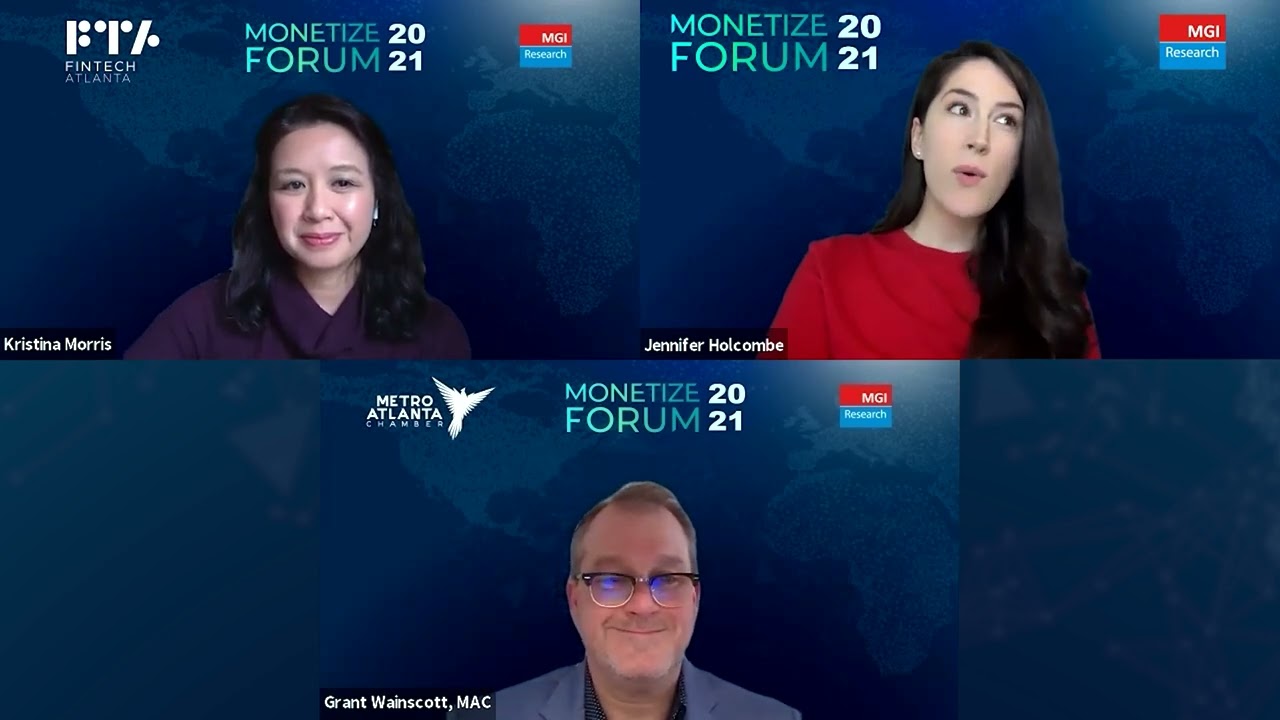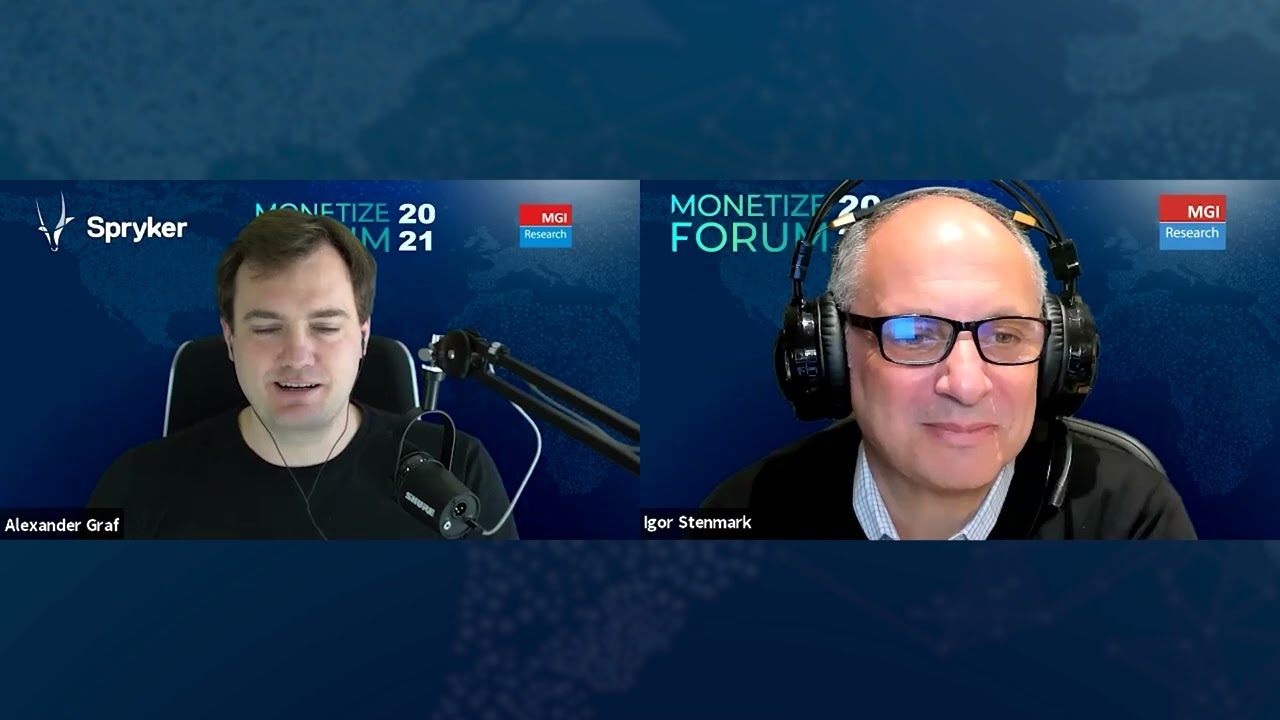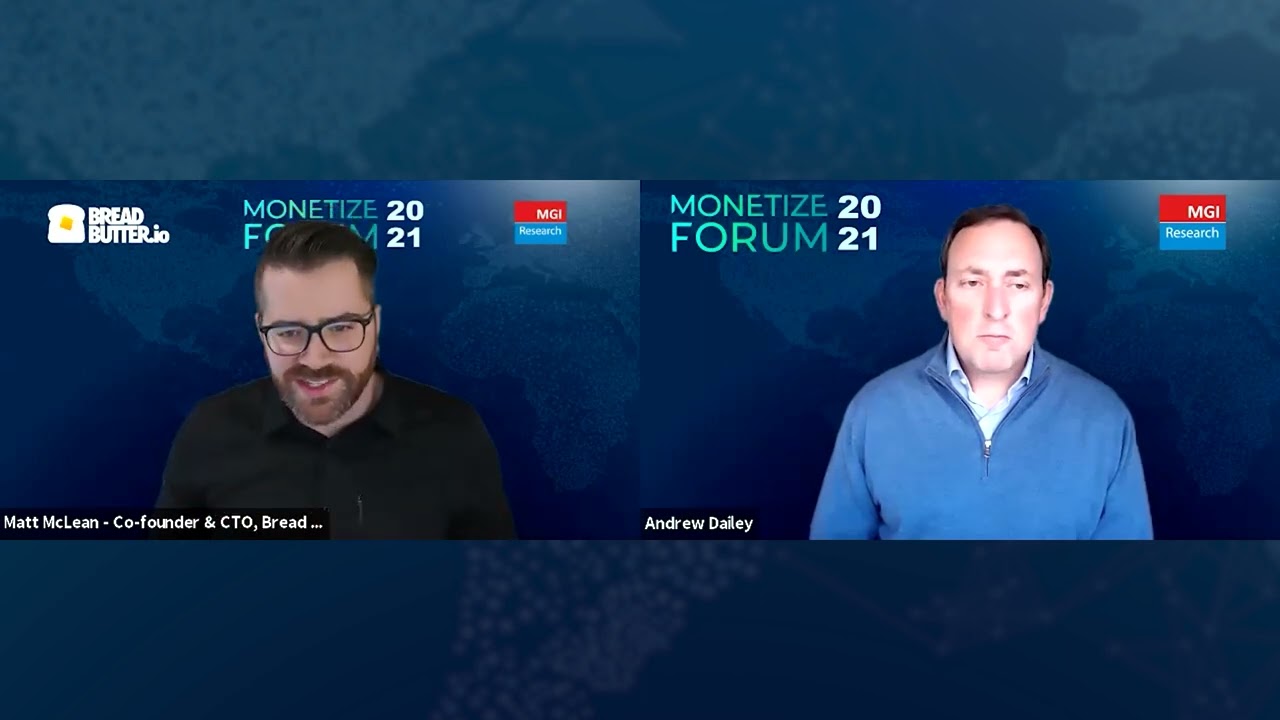
The commerce landscape shifted dramatically last year as the pandemic accelerated the already growing demand for automation worldwide. Certain trends were obvious—online retail, work-from-home products, etc. Others, like the cropping up of new international digital boundaries were less on the surface but no less impactful on business operations and the ability to monetize. To learn more about how commerce is evolving, we invited Craig Vodnik, CEO of cleverbridge, to speak at the 2021 Monetize Forum. In this conversation with MGI Research analyst Matthijs Koorn, Craig discusses how companies are successfully working through pain points, as well as which developments he thinks will be worth watching for in the future.
Key Issues
Which trends appearing in commerce will continue into 2021 and beyond?
How is B2B following the automation track we’ve seen in B2C, and how does that vary across borders?
In moving from B2C to B2B, how should businesses evaluate potential partnerships?
Guest Profile
Craig is the CEO of cleverbridge, the market-leading, full-service e-commerce platform for B2B and B2C software, SaaS, and subscription services. Before co-founding cleverbridge in 2005, Craig worked in the financial services, e-commerce, banking, and publishing industries, starting with his first job as the webmaster at the Chicago Tribune, where he led the technical efforts to launch the newspaper online in 1996.
Matthijs Koorn
Good afternoon. I’m joined for this session by Craig Vodnik, the CEO and co-founder of cleverbridge. Cleverbridge is in its 15th year, so this year is quite a celebratory one, though this is not your first e-commerce venture. Welcome, Craig.
Craig Vodnik
Thank you, Matthijs.
Matthijs Koorn
You have dual headquarters between Cologne, Germany and Chicago, and you’re focused on digital goods. Did I forget anything there?
Craig Vodnik
That’s the main thing. We’ve been around for a while and have had a really great run. I would say we’re kind of like e-commerce nerds.
Matthijs Koorn
It’s not your first venture either. You’re very versed in setting up and growing companies, so I think you’re heading in the right direction. Looking back at 2020, are there any observations you can share from your client base, given our general assumption that, being in digital, you were on the right side of the coin when it landed?
Craig Vodnik
We were kind of fortunate in that way, yes.
Matthijs Koorn
Can you give us any specific verticals or specific observations?
Craig Vodnik
Yes, I think there are a couple of key things we saw. Obviously, with COVID, a lot more people were working from home. People were out buying computers, laptops, tablets, et cetera, so they were then getting those machines equipped for the COVID battle that was happening. That was kind of an interesting time, and in particular, collaboration tools and security were obviously big things. VPN was one of those verticals or segments that really boomed this year as the corona situation meant people working remotely and making sure that their data would be transmitted correctly and protected to their office.
I think the second big trend—present already in the last few years but only growing—is what I would call the nationalist trend. We’re seeing it in politics, but we’re also seeing it digitally because countries are taking measures to guard their interests. They call it protecting their own citizens, but in reality, they’re trying to prevent a lot of the outflow of value from one country to another where the manufacturers are. They’ve been putting up these digital boundaries in order to prevent some of that or at least get their fair share from a governmental perspective.
Matthijs Koorn
Yes, that’s very interesting. One of the other companies we interviewed (they’re doing a lot more in physical goods) works with some of the Chinese merchants, so they’re actually hit by this change in how the Chinese logistics of fulfillment have been reclassified, and they’re seeing a shift that may mean going local or going with a plan B. So indeed, we’re seeing more localization, and I think you’re right—“nationalistic” is the right word. Is that something you see resonating in new clients or your prospect base?
Craig Vodnik
I think that our existing base is still having to deal with these new rules popping up around the world, and that’s what we do as a merchant of record on their behalf; we take care of that around the world. If they hear about something, they ask us, “What’s going on in South Korea, in Brazil, in Russia, in Turkey? What is this new rule? How does that affect us?” and we help them.
When we talk about new companies that we’re working with, I’d say it’s primarily more B2B companies, companies that traditionally maybe haven’t done a lot of digital, customer experience-focused transactions and subscriptions. They’re typically just doing this for the first time or are in their first five years, so they’re kind of spreading their wings and starting to be exposed to all of the complexity that happens across borders.
Matthijs Koorn
Yes, interesting. We also see a lot of interest in B2B. It’s very broad, so we get questions ranging from working capital to how to use cards or virtual cards in a procure-to-pay cycle to all kinds of toolings—like CPQ tools. Are you getting similar requests, or have you had similar observations?
Craig Vodnik
Yes, I think what we’re seeing is a lot of automation requests. What companies are trying to do is become more efficient with their own people. They want to simplify processes as well as have a better customer experience. As an example, if a sales rep trying to close a deal only has Salesforce as their tools and it’s not connected to the ERP system or the pricing engine, it becomes really difficult to get a quick quote that you can confirm and send off to that end customer. So, CPQ (quote-to-cash) is a big part of where people are trying to close that last mile to make it a lot easier for the end customer to pay and also for the business to actually get the money faster.
Matthijs Koorn
Yes, we see a lot of focus on that. I think that was a knee-jerk reaction at the beginning of COVID. It has eased off a little bit, but automation is a big keyword in this whole trend and where business is going. Are you also getting requests on the other side—the accounts payable side?
Craig Vodnik
Yes. Companies are looking at the whole cycle. They’re starting with one pain point, and as they look at the whole process, they begin to realize, “Wait a second—this is a bigger onion that we need to continue to unfold and peel back.” Eventually, they want to update the whole process because it is or has previously been really inefficient, and digitization and digital automation provide a lot more opportunities to squeeze out efficiency. So, what we hear across the board is that people who are looking at increasing their customer experience and increasing the speed to cash are looking at all aspects of that process.
Matthijs Koorn
Yes. Can you share with us what you see as the biggest underestimation people have of B2B going international, whether that’s in general or regarding a feature or country that people expect a lot from but underestimate in terms of difficulty or challenges?
Craig Vodnik
That’s a great question. I think that some people go into it really knowing that it’s going to be difficult, primarily because they’re looking at channel conflict and, perhaps, where the revenue is owned within an organization, and they recognize how hard it will be to get everyone on board. It’s one thing to say, “Hey, we’re going to plug this partner in,” or “We’re going to plug in this new process.” You then have to change the behavior of the people, not just within your own department or your own business unit, but in other ones. Then, you have the channel on top of that, and who gets paid for what and who’s going to win and lose in that whole process are questions people are concerned about. It’s a hard problem to tackle, but there are definitely options and ways to do it so it actually works out for everybody. In a lot of cases, the channel might not really care about some of the opportunities that are sitting in their database, so the company wants to monetize that as much as they can, and that’s where automation actually really helps the channel instead of hurting it.
Matthijs Koorn
Yes, and then on top of that, there is a big trend of brands going directly to consumers, but I guess also to businesses where you potentially get channel conflict. Is that something you’re seeing?
Craig Vodnik
Yes, I like to call it the Amazon effect—it used to be the iTunes effect. Consumer companies would come to us and say, “Hey, I want to open an app store, so I can make it one click for my customers to buy,” but now everyone has kind of come around to Amazon and is basically saying, “Why should my customers have to wait until my sales reps are available on the phone? Why shouldn’t they be able to do that themselves?” Actually, that’s a better customer experience. People are looking at this for both B2C and B2B, but B2B is the emerging opportunity where there’s a lot less automation and technology experience in selling direct to buyers, while the consumer side has obviously become quite good at it over the last 15 years, especially on an international basis.
Matthijs Koorn
Yes, I completely agree, and I think a lot of the business buyers are taking their consumer experience to the office and they’re thinking, “Well, I’m comfortable buying whatever I buy at home online. Why not buy it for my business?” We see this even with some big goods.
Craig Vodnik
Yes, and this is happening at much higher price points. The average order value we see on B2B transactions is substantially higher than consumer. We’re seeing orders in the five-digit range that people are processing through a purchase order, paying via a wire transfer, or even putting on a credit card, believe it or not. It’s become mainstream; it’s become accepted, so it’s a big opportunity where we see people looking for solutions. They want help.
Matthijs Koorn
Yes, we regularly see over a million put on a card. It’s often a single-use virtual card, so it has a lot of protection in case it’s intercepted. I agree, though—there’s a whole different route or market developing there.
Craig Vodnik
Matthijs, I have a question for you while we’re on the subject, if you don’t mind.
Matthijs Koorn
Yes, sure.
Craig Vodnik
I sit in Chicago; you’re in the Netherlands. What we see on the B2B side seems like there’s more awareness and movement on that in the US or North America than we see in Europe. From your sense of the audience that you talk to, is there a bit of a delay or difference in acceptance of going to your customers in a B2B way as compared to the US? 15 years ago, when it was consumers, it felt like the US generally led that. Then, of course, Europe quickly caught on and caught up.
Matthijs Koorn
That’s a very good question, Craig. I think Europe is catching up. We’re definitely behind. Of course, we’re not as card-savvy as the US is in general; we’re not as business card or corporate card-savvy as the US is, but we are catching up. I think the UK is nearly on the US level, and Ireland is probably not far behind being that they (particularly the UK) are very Anglo-Saxon/US-centric. And although Europe is behind, over the last two to three years, I’ve seen platforms like Coupa doing procurement automation (including cards), and in the UK, there’s a couple of companies. Actually, a deal just closed in the UK with WEX buying eNett and Optal, and there’s another company in the UK—the name eludes me at the moment—which is all about cards and operating card-centric, a lot of it in a B2B environment.
Think of a rider buying things and getting a virtual card pushed in the Apple or Google wallet to pay at the store where they shop or in a marketplace. That’s absolutely around, and I’ve seen larger companies put out RFPs on automating and optimizing these procure-to-pay cycles. It’s more long tail and on the mid-ends; it’s not yet on strategic goods. Actually, in the US, you’ll see companies pushing their entire procurement cycle online and on cards. I’ve also seen Mastercard and Visa both doing acquisitions and on stage at events saying, “We’re also transforming the rails to process any type of payments, and we have open banking coming.” And open banking is a unique opportunity to move those wire transfers onto the card rails.
Craig Vodnik
Yes, and that’s what I was going to say. I’m jealous of Europe’s wire transfer infrastructure and the speed with which that money actually moves around because, in the US, we still don’t have that. That said, I think there’s some ACH improvements coming.
Matthijs Koorn
Exactly. There are some developments coming. I think the different Feds have agreed on a standard for the rails, and the next step is to start to implement it. If you look at Brazil, they implemented an open banking/instant payment system within a matter of 12 months. It went live on the 16th of November, and a month later, they had 47 million people signed up in a population of just over 200 million. It’s a very mobile-savvy country, and, of course, this is very B2C. B2B in Brazil is very paper and wire transfer-driven, but in the B2C environment, it’s very mobile. They like it, and it’s very, very cheap, so you can see the pull for merchants in offering it.
Craig Vodnik
Yes. I wish we had that in the US.
Matthijs Koorn
So yes, it’s coming, but I guess we have to be patient from that perspective. Another thing you touched on is partnerships. How important are partnerships for you to develop and move into, let’s say B2B, but it could also relate to B2C?
Craig Vodnik
Typically, in the B2C world, most companies would work direct, unless it’s a really big opportunity, so being able to do a lot ourselves was how we handled it the first 14 to 15 years. However, in B2B (especially as you look at a global market), these are clearly much bigger volumes of money that are moving around. Companies have a little less knowledge about what’s happening that’s new. Therefore, they’re looking to partners in order to help guide them and advise them on which way to go and what to do. We have been working in the last few years on developing a partner network that helps us explain and augment the things that we offer from a commerce automation perspective to these sorts of B2B companies. Especially when you look at Asia, it’s a little more normal there to work less direct and more through partners anyway.
Matthijs Koorn
Yes, true.
Craig Vodnik
It kind of helps to actually develop a partner network when going into the Asian market. Certainly, it’s something that we see as key to where we’re headed in 2021 and beyond because it’s a part of how decisions are being made and, therefore, a very important part for us.
Matthijs Koorn
Are you focusing on a particular ecosystem, or are you more opportunistic? Is there a partnership strategy?
Craig Vodnik
We’re primarily looking at companies that complement what we do so that there’s essentially the opportunity to go in together and say, “Hey, we can help you from A through M, instead of just from A to D.” We’re looking at companies that may already be in some part of the business and need the commerce capabilities, or vice versa—we have the commerce capabilities, and if we need some augmentation of that, we could bring somebody else in with us.
Matthijs Koorn
Interesting. What’s the role of APIs and microservices in your partnership strategy and your overall strategy?
Craig Vodnik
Well, I think as part of our overall strategy, it’s the clear de-bundling of the monolithic platforms of the past. Companies want more flexibility which comes with modularity, but, at the end of the day, they still want support and consultative partnership to help advise on how to do certain things and to connect the pieces—the business processes and experience. So, we have a number of APIs (available online for people to look up), so we can connect into systems very easily. Then on the partner strategy side, it’s the same thing. Typically, we’ll connect with a partner directly; then we can go in and offer our services together in a faster way than if it were done separately at the moment that it’s needed.
Matthijs Koorn
Do you see a different role? For instance, do you see developers or more technically oriented people coming into the buying cycle?
Craig Vodnik
That’s a good question. We see it in all parts. We see different buyers for different types of products. Imagine a Stripe-type solution just starting basic and getting something off the ground—developers would play a big role. When you start getting to these big business processes, developers and IT are part of the decision-making body. They’re typically not the decision makers, but they’re part of the decision-making body. In those initial stages of just getting projects off the ground, though, developers are a very important channel to get things moving. They basically get that Trojan horse in to show people what you can do without it being a big bake-off or a big competition.
Matthijs Koorn
Have you changed hiring profiles or strategy to get more, let’s say, tech-savvy people into your sales teams, or have you trained people?
Craig Vodnik
Yes. Our best salesperson was a customer service agent that I hired about 14 years ago who just had this real affinity for technology, loved the clients that we had, and was just blown away that, at 21, he was working with the owners of some of these companies. We’ve tried lots of different things, and clearly, people who have a technology affinity and are really into these different types of softwares and services online and consume them for their own use are typically the ones that, when acting more consultatively, become really, really good and clearly stand out in the crowd.
We’ve received this feedback numerous times with a variety of our team members who’ve been with us for 10-plus years. Customers say, “You guys really get it—as opposed to somebody that’s just a hired gun coming in and trying to sell me on something. You’re actually trying to solve for and provide the right fit for what we need, rather than just telling us we need your solution when you don’t even know our problem.”
Matthijs Koorn
Yes, exactly. “Move over, Mr. Client—I’ll also implement it for you.”
Craig Vodnik
Yes.
Matthijs Koorn
All right. Last but not least, can you share a prediction with us of where we’ll be in 6 to 12 months from a commerce perspective?
Craig Vodnik
I think that we saw this big, big bump at the beginning of COVID, and there’s a lot of discussion about it. Will that last, and how high will that bump be? My belief is, by the end of the year, it’s only going to continue to go up because we’re still going to see a pretty big reduction in foot traffic around retail stores. Therefore, I don’t foresee that, in the next 12 months, there will be any kind of meaningful drop in e-commerce. I think it’s still up and to the right.
Matthijs Koorn
Yes, commerce is here to stay.
Craig Vodnik
Yes, and it’s taking a bigger chunk of every dollar and every euro.
Matthijs Koorn
Excellent. Thank you very much, Craig. That was great. I think you’ll be around if people want to ask questions, and they can contact you on the platform.
Craig Vodnik
Absolutely, yes. I’ll stick around for a while. Thanks, Matthijs.
Matthijs Koorn
Thank you.




